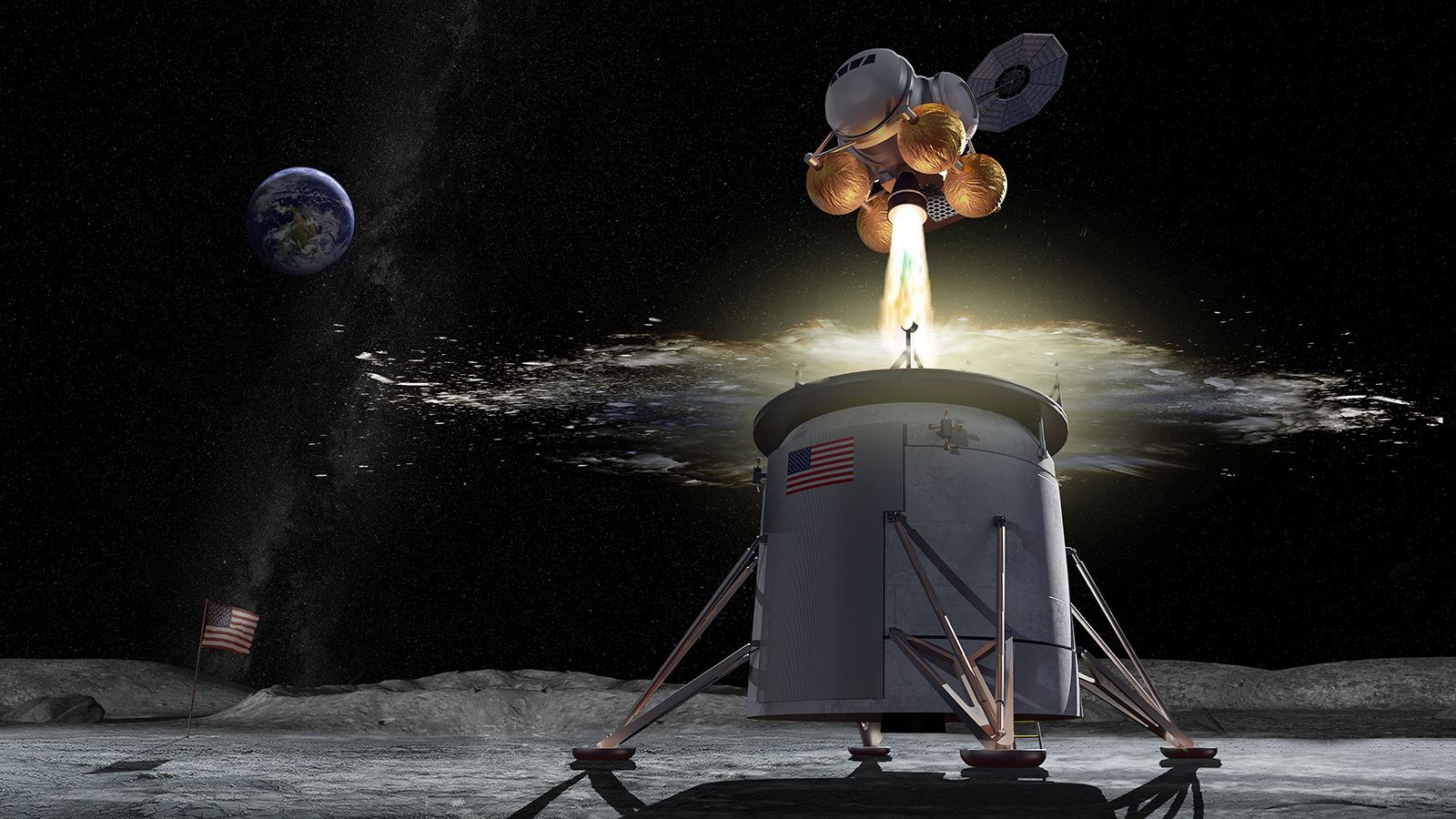Stay Up to Date
Submit your email address to receive the latest industry and Aerospace America news.
Decision in multibillion-dollar Artemis program riles congressional backers of NASA's Johnson Space Center in Houston
NASA’s Marshall Space Flight Center in Alabama will oversee development of the lander that will deliver American astronauts to the surface of the moon in 2024 under the Artemis program, NASA Administrator Jim Bridenstine announced today.
Plans call for a three-stage spacecraft that will be designed and built for NASA by several companies still to be selected. NASA Marshall engineer Lisa Watson-Morgan will oversee the overall lander effort as program manager. Marshall also will have direct responsibility for the transfer stage that will take the lander and astronauts from the lunar Gateway space station down to low-lunar orbit and for the descent stage that will then take them the rest of the way to the surface. NASA’s Johnson Space Center in Houston will be responsible for the ascent stage.
“Two of those [lander] elements are highly focused on propulsion, and I would argue that when it comes to propulsion, there is no place in the world that is more experienced and better than Marshall Space Flight Center,” Bridenstine said.
A NASA press release sent out Friday afternoon said Johnson will also manage the Artemis missions, beginning with the uncrewed Artemis-1 flight of the Orion crew capsule atop the Space Launch System rocket.
Media reports earlier this week that NASA had decided that Marshall should run the program sparked congressional infighting.
Texas lawmakers, led by Sen. Ted Cruz, sent a letter to Bridenstine on Thursday accusing him of “disregarding” Johnson’s experience in landing systems. The Texas center oversaw the development of the Apollo lunar lander, which was built by Grumman Aircraft Engineering Corp.
“While the Marshall Space Flight Center specializes in rocketry and spacecraft propulsion, and is undoubtedly the leader in these areas, it is the Johnson Space Center, which has been, and continues to be, ground zero for human space exploration,” the letter says.
One of the letter’s signatories, Republican Rep. Brian Babin, whose district includes Johnson, was invited to the event but decided not to attend.
When asked Friday to respond to the letter, Bridenstine said, “NASA has a very different look today than it did in the 1960s.”
“In the 1960s, if a center led a mission, well, that center led the mission,” he said. “Today we have telecommunications and can work remotely and networks where we can share information and data.”
One of the congressmen who joined Bridenstine for the announcement, Rep. Robert Aderholt, R-Ala., echoed that sentiment: “The centers will work together. This is not where Marshall does everything. They do a part of it.”
Aderholt, the top Republican on the House appropriations subcommittee that funds NASA, also voiced his support for funding the Artemis program, which Bridenstine has estimated will cost $20 billion through 2024. So far, the White House has requested an additional $1.6 billion for fiscal 2020.
Congress will “make that happen,” Aderholt said.
“We want to make sure NASA and everyone who works at NASA has the resources they need and makes sure the taxpayers’ dollars are used wisely,” he added.
About cat hofacker
Cat helps guide our coverage and keeps production of the print magazine on schedule. She became associate editor in 2021 after two years as our staff reporter. Cat joined us in 2019 after covering the 2018 congressional midterm elections as an intern for USA Today.
Related Posts
Stay Up to Date
Submit your email address to receive the latest industry and Aerospace America news.




